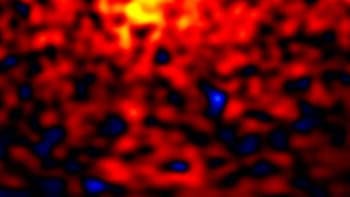A neutron star may be around 10 kilometres in diameter, but it is governed by the same forces that arrange the neutrons in an atomic nucleus just femtometres across. This means that studies of neutron-rich nuclei could provide insights into their astrophysical counterparts. Now Charles Horowitz and Jorge Piekarewicz of Indiana University in the US have measured a lead nucleus and related its properties to the interior of a neutron star (C Horowitz and J Piekarewicz 2001 Phys. Rev. Lett. 86 5647).
The nucleus of lead-208 has the highest proportion of neutrons of all stable nuclei – 126 neutrons to just 82 protons. Theorists believe that the neutrons in such nuclei form a neutron-rich ‘skin’ that surrounds a core of protons. Under a certain pressure, protons are squeezed together and gain enough energy to overcome the Coulomb barrier. This is a potential energy barrier that pushes apart similarly charged particles, unless they are very close together. By overcoming the barrier, the protons force the neutrons – which are more numerous – to the surface of the nucleus. The higher the pressure, the more neutrons are pushed out and the thicker the skin becomes.
In their ‘parity radius experiment’, Horowitz and Piekarewicz accurately measured the radius of a lead-208 nucleus. Using field theories that predict the interactions in large assemblies of nucleons, the researchers calculated the thickness of the neutron-rich skin under different pressures.
From these results, however, Horowitz and Piekarewicz calculated that pressure has the opposite effect in neutron stars. Neutron stars are thought to have a crust of solid non-uniform neutron-rich material surrounding a liquid core. This crust is analogous to the skin in the lead nucleus. Under high pressure, the increased internal energy makes it energetically unfavourable for the well-mixed liquid in the core to ‘condense’ into the solid non-uniform crust. As the pressure rises, the distance from the centre at which liquid matter solidifies grows larger, and the crust becomes thinner.
Horowitz and Piekarewicz believe that these clues about the structure of neutron stars will give astronomers insights into the rotation of pulsars and the properties of non-spherical rotating stars.



